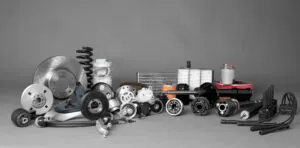Key Takeaways
- Optimized Resource Allocation: Category spend analysis helps companies allocate resources more effectively by organizing spending data, leading to better investment decisions and reduced waste.
- Enhanced Compliance: Accurate tracking of spend and financial functions increases transparency and compliance, reducing risks and minimizing errors.
- Improved Efficiency: By identifying and mitigating risks, companies can enhance supply chain efficiency, automate processes, and stay competitive.
- Data-Driven Decisions: Regular tracking and analysis of spend provide actionable insights for better procurement strategies and significant cost savings.
What is Category Spend Analysis and How Does It Help Companies?
The wide range of options available to consumers is often credited to the rapid pace of development, rise in competition, and need for innovation that has propelled growth across industries. As industries grow, supply chains expand, and company operations become increasingly complex. To minimize the risks, confusion, and costs of managing mass operations together, companies often segregate their offerings according to categories. These categories can be determined based on various factors, and allow companies to track, evaluate, and assess their spend in a more organized, data-driven, and efficient way. This process has given rise to category spend analysis, which provides companies, CPOs, and stakeholders with the opportunity to closely evaluate the spend, costs, savings, and other crucial financial data in a controlled, organized, and safe method. There are various major benefits to category spend analysis, including improved investment decisions, better tracking, lower risks, and overall improved performance across the procurement and sourcing departments.
What are the Key Benefits of Category Spend Analysis in the Mining Industry?

Improved Resource Allocation: Sourcing for a large company with high consumer demand, various offerings, and a large supply chain can be extremely complex, causing companies to require an efficient, organized, and well-tracked process to allocate spend and investment. As companies grow, the need for various resources is distributed across various channels, causing companies to often struggle with tracking, allocation, and improvement. With category spend analysis, companies can identify major needs within the category, category managers can accurately allocate the relevant resources, and CPOs can overlook overall procurement resource allocation and spend management. This process also helps category managers minimize errors, ensure there is no fraudulent activity, and avoid wastage or shortage of resources.
Increased Compliance: Consistent, efficient, and accurate tracking of spend, costs, savings, and other monetary or financial functions can significantly reduce various risks, human error, and potential fraud. Additionally, having to track all transactions, processes, and functions taking place can lead employees and managers to closely assess activities, minimize errors, ensure all required activities are completed, and stay updated regarding changing factors within the supply chain. This accountability and necessity for tracking all activity can lead to increased employee compliance rates and more transparency. This practice can also lead to higher compliance rates from suppliers and vendors pertaining to each category.
Tracking and Analysis: As digitization and automation become increasingly crucial across industries, data tracking and analysis have become an essential and extremely beneficial norm. The impact of efficiently keeping track of spend, expenses, and savings is manifold, including increased profitability, reduced losses, higher efficiency, and more transparency along the supply chain. Additionally, category spend analysis and tracking can help companies identify and overcome shortcomings or gaps in performance, implement techniques to improve systems, and find potential errors before they can cause any losses or major damage to the company. Tracking spend also provides companies with the data required to make consistent and regular improvements to the internal systems and strategies leveraged along the supply chain.
Reduced Risks: The rapid evolution of the industry has led to the development and occurrence of various major risks across markets, companies, and supply chains. As supply chains become more complex, businesses struggle to find risks, minimize them, and overcome their impact. Mitigating risks is extremely challenging, and companies often struggle to identify the factors that cause these risks preemptively. However, with category spend analysis companies can closely track and assess the patterns along their supply chain and category managers can identify risks within their category in advance, making it possible to evaluate and develop effective strategies to address them. Identifying and mitigating these risks can help companies minimize losses, stay ahead of the curve, and understand their systems better.
Higher Efficiency: Having a robust and streamlined supply chain requires a combination of various processes, functions, and operations. As industries continue to grow, maintaining a strong and efficient supply chain becomes increasingly challenging, leading companies to make mistakes, suffer monetary losses, and witness a rise in customer attrition. Category spend analysis helps companies stay ahead of potential risks, identify shortcomings within the system, automate and accelerate many repetitive processes, and overcome evolving industry factors with ease and precision. This process helps companies significantly increase efficiency, and maintain an unparalleled strategic edge with data, actionable insights, and well-informed decision-making.
Implementation of Spend Analytics in the Mining Industry
Implementing spend analytics involves several steps to effectively manage and optimize an organization’s spending. Here’s an overview of the implementation process:
Classification and Categorization:
Sort spending information into sensible groups, such as those for IT services, travel, and office supplies. This aids in figuring out where money is being spent and locating potential places to cut costs or improve efficiency.
Management of Suppliers:
Determine and classify the suppliers that the company works with to make purchases. Understanding supplier relationships, negotiating better contracts, and spotting consolidation oppo
ortunities are all made easier as a result.
Data Evaluation:
Utilize a variety of data analysis approaches, including trend analysis, outlier detection, and descriptive analytics. Understanding previous expenditure patterns is aided by descriptive analytics, while highlighting changes over time is the domain of trend analysis.

Success Story
The rising demand for automobiles, electronics, and metals has propelled growth and demand in the mining industry, leading many companies to expand significantly. However, this growth has also come with various challenges, including the need for improved spend tracking, higher efficiency, and data-driven strategies and systems. A growing mining industry player experienced a significant rise in losses, decline in profitability, and inability to efficiently track and analyze spend. To tackle this challenge, the company approached SpendEdge and leveraged our expertise in category spend analysis. Our experts worked closely with the growing company’s category managers to identify shortcomings, gaps, and weaknesses in the spend analysis and management system. With our actionable recommendations and data-driven insights, the company implemented significant changes to their category spend analysis approach, strategies, and processes, and consequently significantly improved overall procurement department spend management and functioning. These changes helped the company restore overall balance, improve their spend tracking, and increase profitability substantially
Conclusion
Category spend analysis is a crucial strategy for enterprises to optimize procurement, reduce overall costs, and enhance process efficiency. By categorizing and evaluating spending, procurement teams can make informed decisions, improve resource allocation, and identify procurement opportunities. Both short-term analysis and long-term spend analysis strategies contribute to better budgeting and project management, ultimately leading to cost-effective procurement of products and services. Implementing a robust spend analysis strategy helps enterprises streamline procurement processes, maximize resource use, and achieve significant savings.




